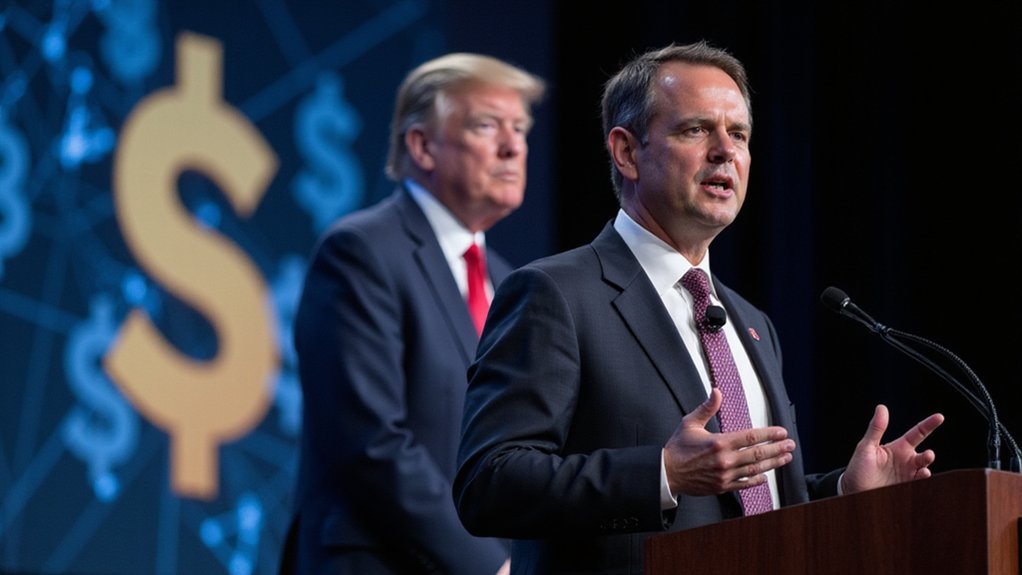Why would traditional banks, those bastions of buttoned-up conservatism that once dismissed cryptocurrency as digital fool’s gold, suddenly find themselves scrambling to launch their own stablecoins? The answer lies in an uncomfortable truth: if you can’t beat them, co-opt them—and the stablecoin market’s meteoric rise from $20 billion in 2020 to $246 billion by 2025 has made ignoring this digital juggernaut impossible.
Major institutions like JPMorgan Chase are now contemplating consortium-backed shared stablecoins, a remarkable pivot from their previous crypto skepticism. This strategic shift reflects banks’ recognition that stablecoins represent more than speculative assets—they’re becoming the infrastructure backbone of modern finance, facilitating over two-thirds of cryptocurrency trading through their speed, cost-efficiency, and round-the-clock accessibility. These digital currencies increasingly rely on smart contracts as self-executing programs that automate transactions once predefined conditions are met, ensuring transparency and eliminating the need for intermediary involvement.
The impending regulatory clarity provided by Congress’s bipartisan GENIUS Act has emboldened these financial institutions to move beyond cautious observation into active participation. The legislation proposes federal oversight for stablecoins exceeding $10 billion market capitalization while establishing reserve requirements and transparency standards that align with traditional banking frameworks. This regulatory certainty could potentially increase stablecoin supply nearly tenfold, creating unprecedented market opportunities.
Banks view stablecoins as defensive maneuvers against fintech disruption, allowing them to retain control over payment infrastructures while modernizing cross-border transactions. The irony is palpable: institutions that once viewed blockchain technology with suspicion now see it as essential for competing with the very crypto startups they previously dismissed.
However, this enthusiasm comes with sobering realities. The Federal Reserve continues studying stablecoins’ systemic implications, particularly concerning financial stability risks from potential investor runs. New adopters can increase market volatility through swift reactions to uncertainty, creating the very instability these “stable” coins purport to eliminate. Currently, stablecoin issuers face inconsistent requirements across different state jurisdictions due to the absence of a uniform federal regulatory framework.
Regional banks face additional hurdles in pursuing independent stablecoin initiatives, confronting regulatory challenges that favor larger institutions with greater compliance resources. Collaborative models are emerging as potential solutions, though these arrangements must navigate complex consortium dynamics while ensuring broad market access beyond initial participants. The widespread adoption of stablecoins has contributed to nonbank intermediaries now comprising over half of the entire financial system.
The stablecoin revolution has transformed from Silicon Valley experiment to Wall Street imperative, with traditional banks grudgingly acknowledging that digital disruption waits for no institution.








